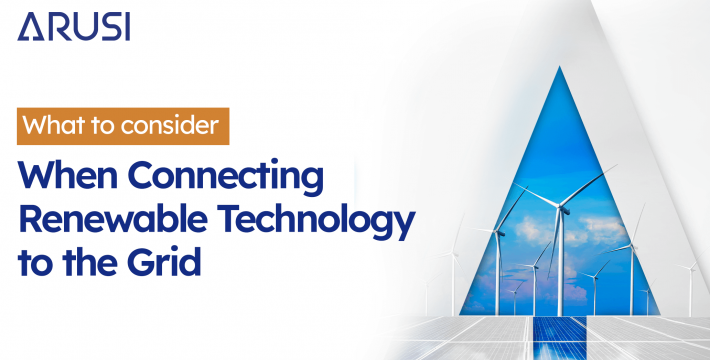
The transition to renewable energy sources like solar and wind is accelerating globally. Governments and corporations have pledged carbon neutrality and set ambitious renewable energy targets. However, the increase in renewable generation presents technical challenges for connecting to the existing grid infrastructure reliably and efficiently. Grid operators and project developers must consider several key factors when integrating renewables.
Understanding the Basics of Grid Connection
Before diving into the complexities of integrating renewable technologies, it’s important to understand the basics of grid connection. The power grid is a complex network designed to deliver electricity from producers to consumers. Renewable energy sources, such as solar and wind power, must be compatible with the grid’s standards to ensure seamless integration. This involves considerations of voltage, frequency, and phase synchronization.
Assess the Strength and Stability of the Grid
The first consideration is understanding the local grid’s capacity to handle variable renewable generation without compromising stability and power quality. Fluctuations in solar and wind resources can create voltage fluctuations and frequency deviations that must remain within acceptable levels.
Stronger grids with large rotating masses like coal and nuclear plants provide inertia against disturbances. Weaker grids with more renewables require grid-forming inverters and fast-response storage to smooth variations. Detailed grid studies help model expected power flows and identify grid upgrades like new transmission lines before project construction. Robust grid assessments prevent renewable assets from harming grid security.
Investment in Renewable Technologies
Significant investment is required in renewable energy sources and in the infrastructure needed to support their integration into the grid. This includes funding for research and development of new technologies, upgrading existing grid infrastructure, and investing in education and training for the workforce.
Standardization and Compliance
When connecting renewable technology to the grid, compliance with national and international standards is crucial. These standards ensure that renewable energy systems are safe, reliable, and compatible with the existing grid infrastructure. They cover aspects such as grid connection requirements, safety standards, and power quality.
Incentives and Subsidies
Government incentives and subsidies play a significant role in promoting the integration of renewable technologies into the grid. These may include tax credits, feed-in tariffs, and grants. Such incentives encourage investment in renewable energy projects and help offset the initial costs associated with grid integration.
Choose the Right Location
Choosing sites with the best renewable resources maximizes power generation. However, locations far from existing grid infrastructure increase connection costs. Developers must find the optimal balance between resource quality and connection feasibility. Locations near substations with spare capacity simplify grid integration.
Upgrading substations or building new ones gets expensive. Proximity to transmission corridors also lowers interconnection costs compared to remote sites needing long feeder lines. Mapping renewable resources while considering grid topology and capacity helps identify prime development locations.
Design Projects for Grid Support
Renewables generators were traditionally designed to maximize energy production. But modern inverters allow renewables to provide key grid services like voltage regulation, frequency response, and ramp rate control. These functionalities require capabilities like low-voltage ride-through that keeps renewables online during grid disturbances.
Designing projects with grid support capabilities enhances system stability as renewable penetration increases. It also captures additional revenue streams from ancillary services markets. Grid codes are evolving to require these smart inverter functions from new renewable generators.
Right-size the Project Capacity
Determining the right renewable project size requires balancing potential generation with grid capacity. Oversizing systems increases costs and connection challenges without yielding extra energy during times of grid congestion. Large projects may require expensive grid upgrades and get constrained when transmission capacity is limited.
Right-sizing considers the grid’s hosting capability for the specific technology, location, and loading level. Smaller modular projects allow faster and simpler deployment. They can scale up over time as grid capacity expands. Gradual build-out mitigates the grid integration challenges of large, utility-scale installations.
Utilize Forecasting and Controls
Renewable generators must provide accurate generation forecasts to system operators. Forecasting tools predict output based on weather data over different time horizons. Accurate day-ahead forecasts allow efficient scheduling of complementary generating assets.
Short-term forecasts enable effective real-time operations. Sophisticated control systems curtail renewable output during congestion events to prevent overloads. Curtailment avoids costly grid upgrades. But compensation mechanisms for curtailed renewables are essential. Advanced forecasting and smart curtailment controls optimize grid integration.
Invest in Transmission
Building new transmission capacity is critical for large-scale renewable deployment. Long-distance lines allow tapping the best renewable resources and smoothing variable generation over large regions. Transmission helps deliver remotely generated renewable power to load centers. Interregional interconnections between local grids also expand integration capacity. But transmission projects face sitting and cost challenges.
A combination of AC lines, DC links, dynamic line ratings, and grid-enhancing technologies like energy storage improves networks for renewables. Coordinated transmission planning between system operators, utilities, and developers enables a robust renewable energy grid.
Closing Thoughts
The renewable integration considerations vary across projects, based on technology, location, and grid conditions. But detailed grid studies, appropriate project siting and sizing, forecasting tools, and grid-support capabilities are universally beneficial. In addition, adequate transmission capacity with interregional links provides the backbone for large-scale renewables.
Planning and coordination between stakeholders ensure renewables are telecommunication engineering services smoothly into the existing grid infrastructure. With the right strategies, renewable technologies can scale up rapidly while maintaining grid reliability and resilience.


